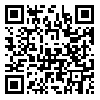Volume 56, Issue 4 (1 1998)
Tehran Univ Med J 1998, 56(4): 1-5 |
Back to browse issues page
Download citation:
BibTeX | RIS | EndNote | Medlars | ProCite | Reference Manager | RefWorks
Send citation to:



BibTeX | RIS | EndNote | Medlars | ProCite | Reference Manager | RefWorks
Send citation to:
Karimian S. Calcitonin gene related peptide and its functions. Tehran Univ Med J 1998; 56 (4) :1-5
URL: http://tumj.tums.ac.ir/article-1-1531-en.html
URL: http://tumj.tums.ac.ir/article-1-1531-en.html
Abstract: (23018 Views)
Calcitonin Gene Related Peptide (CGRP) was first reported in 1982. This peptide contains 37 amino acids which could be found in Alpha and Beta forms. CGRP shows diversity both in its receptors and biological effects and up to now four different types of receptors have been reported. It can act like a neurotransmitter, local hormone and neuromodulator. They have a variety of effects on different organs such as a potent effect on vasodilation and smooth muscle relaxation. Ability of CGRP for induction of protein extravasation from blood vessels was uncertain. In this study intra-articular infusion of 10^-6 M CGRP to the rat knee joint induced significant protein extravasation into the rat knee joint space. The amount of protein was detected by modified Iawata method which could detect amount of protein between 5-500 mg/L. Higher and lower concentrations failed to induce protein extravasation. Failure in higher concentration was likely due to significant fall in blood pressure. In the presence of an arterial hypotension induced by an ? adenoreceptor antagonist, 10^-6 M of CGRP failed to produce protein extravasation. This effect of CGRP was a specific active effect and not a passive effect due to its potent vasodilation effect, as similar vasodilatory response induced by a ?-adrenoreceptor agonist failed to induce protein extravasation. There is more than 50% of sensory neurons which contain CGRP and they are spread in all over the body and joints, therefore CGRP induced protein extravasation can potentiate inflammation in different organs.
Keywords: CGRP
| Rights and permissions | |
 |
This work is licensed under a Creative Commons Attribution-NonCommercial 4.0 International License. |





